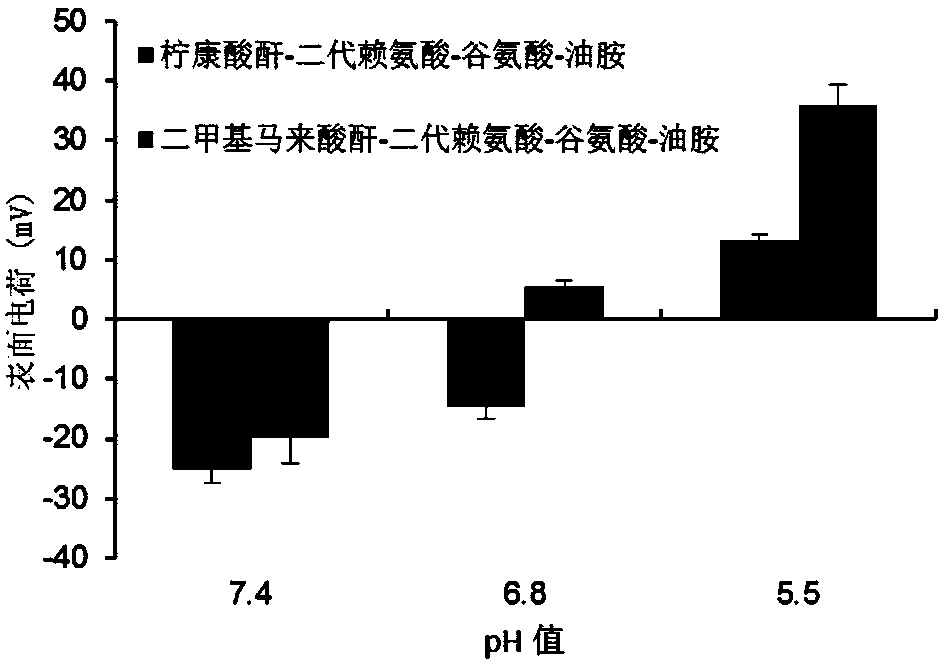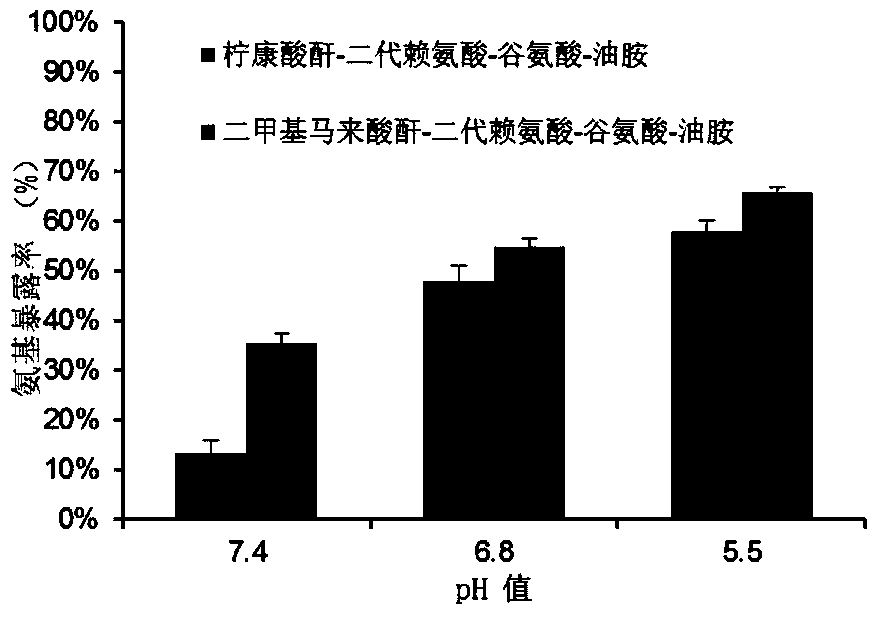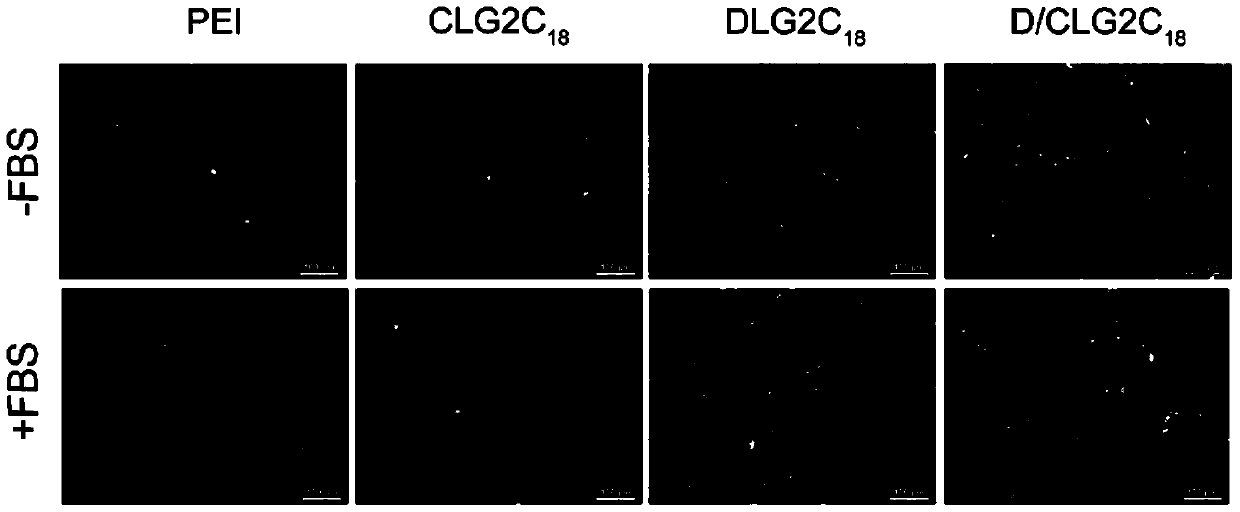A kind of ph-responsive lipid based on dendrimers and its preparation method and application
A dendrimer and responsive technology, applied in the field of biomedical materials, can solve the problem that non-viral vectors are difficult to obtain high transfection efficiency in vivo and in vitro
- Summary
- Abstract
- Description
- Claims
- Application Information
AI Technical Summary
Problems solved by technology
Method used
Image
Examples
Embodiment 1
[0063] (1) Adopt divergence method or convergence method or the method that divergence-convergence combines to synthesize more than two generations of dendrimers (can refer to the method described in the patent literature of CN 103554923A), also can adopt commercially available dendrimers molecular;
[0064] (2) Carry out end group modification on the periphery of the dendritic molecule, and graft a large number of amino groups and / or guanidine groups on the periphery. When lysine or arginine or histidine is selected as the repeating unit of the dendrimer, the above-mentioned end group modification step is not required;
[0065] (3) Protect the peripheral functional groups of the resulting dendrimers containing amino groups and / or guanidino groups, and only expose one or two functional groups at one end, and then connect one end of the dendrimers through the exposed functional groups branched hydrophobic groups;
[0066](4) Removing the protecting group of amino group and / or...
Embodiment 2
[0072] (1) Dissolve plasmid DNA or RNA in sterile HBG buffer solution (20 mmoles of 4-hydroxyethylpiperazineethanesulfonic acid, 5% glucose) to prepare a 0.1 mg / mL gene solution; Dissolve in HBG buffer solution, and prepare solution A of 0.1-10 mg / mL; add any pH-responsive lipid material prepared in Example 1 into HBG buffer solution, and prepare solution A of 0.1-10 mg / mL B; or add the two pH-responsive lipid materials containing A-type groups and B-type groups prepared in Example 1 respectively into the HBG buffer solution by ethanol injection, and prepare a solution of 0.1-10 mg / mL B and C.
[0073] (2) Mix the solution A obtained in the above steps with the gene solution, and incubate at room temperature for 20 minutes to obtain a binary complex, then add solution B or solutions B and C in proportion, and incubate at room temperature for 20 minutes After that, a ternary complex is obtained.
[0074] Optionally, the cationic carrier is a cationic lipid or a commercially a...
Embodiment 3
[0079] Embodiment 3: citraconic anhydride-second-generation lysine-glutamic acid-n-undecylamine (CIT-Lys(G2)-Glu-UA 2 ,CLG2C 11 ) preparation
[0080] Take the fan-shaped dendrimers (protected by the second-generation amino Pbf / Boc) of lysine as the repeating unit of the 1st generation and the 2nd generation, glutamic acid-n-undecylamine, condensing agent (such as: 1-ethyl-(3- Dimethylaminopropyl) carbodiimide hydrochloride EDC, catalyst 1-hydroxybenzotriazole (HOBt), base (N, N-diisopropylethylamine DIPEA) according to 1:1:2: The molar ratio of 2:4, at 0 ℃, under the condition of nitrogen protection, add dichloromethane solvent, react for 0.5 hours; Wash with aqueous sodium chloride, dry over anhydrous magnesium sulfate for 12 hours, concentrate under reduced pressure, use ethyl acetate:petroleum ether=1:1 (volume ratio) as eluent, and separate by column chromatography to obtain dendrimers with hydrophobic tails (second-generation lysine-glutamic acid-n-undecylamine).
[...
PUM
| Property | Measurement | Unit |
|---|---|---|
| particle size | aaaaa | aaaaa |
Abstract
Description
Claims
Application Information
 Login to View More
Login to View More - R&D
- Intellectual Property
- Life Sciences
- Materials
- Tech Scout
- Unparalleled Data Quality
- Higher Quality Content
- 60% Fewer Hallucinations
Browse by: Latest US Patents, China's latest patents, Technical Efficacy Thesaurus, Application Domain, Technology Topic, Popular Technical Reports.
© 2025 PatSnap. All rights reserved.Legal|Privacy policy|Modern Slavery Act Transparency Statement|Sitemap|About US| Contact US: help@patsnap.com



